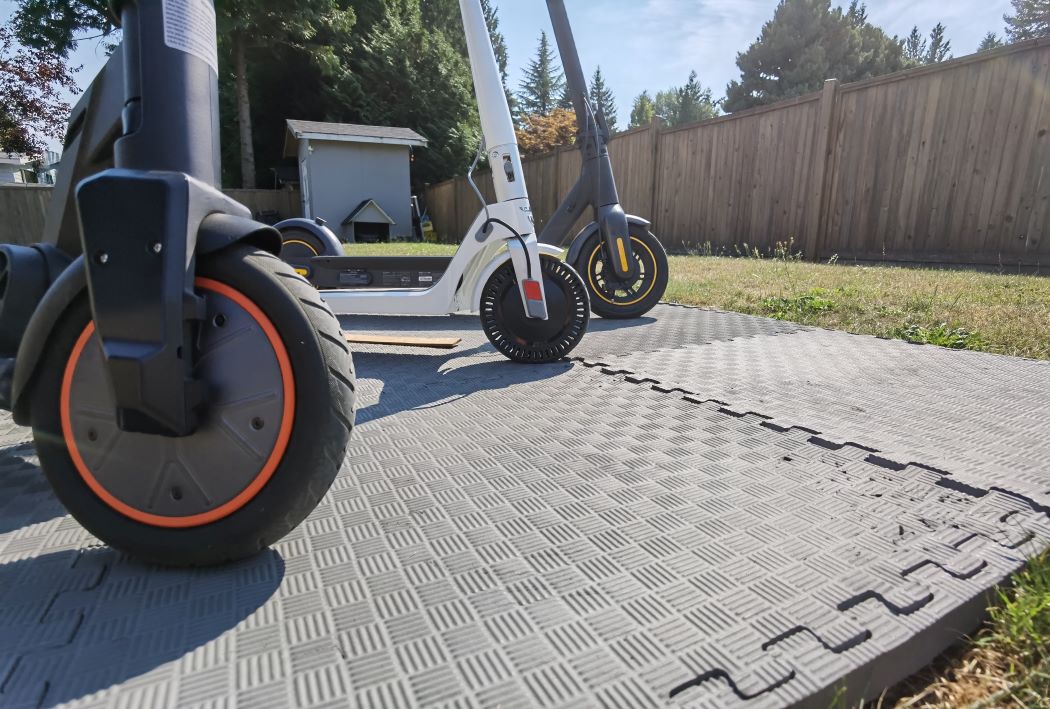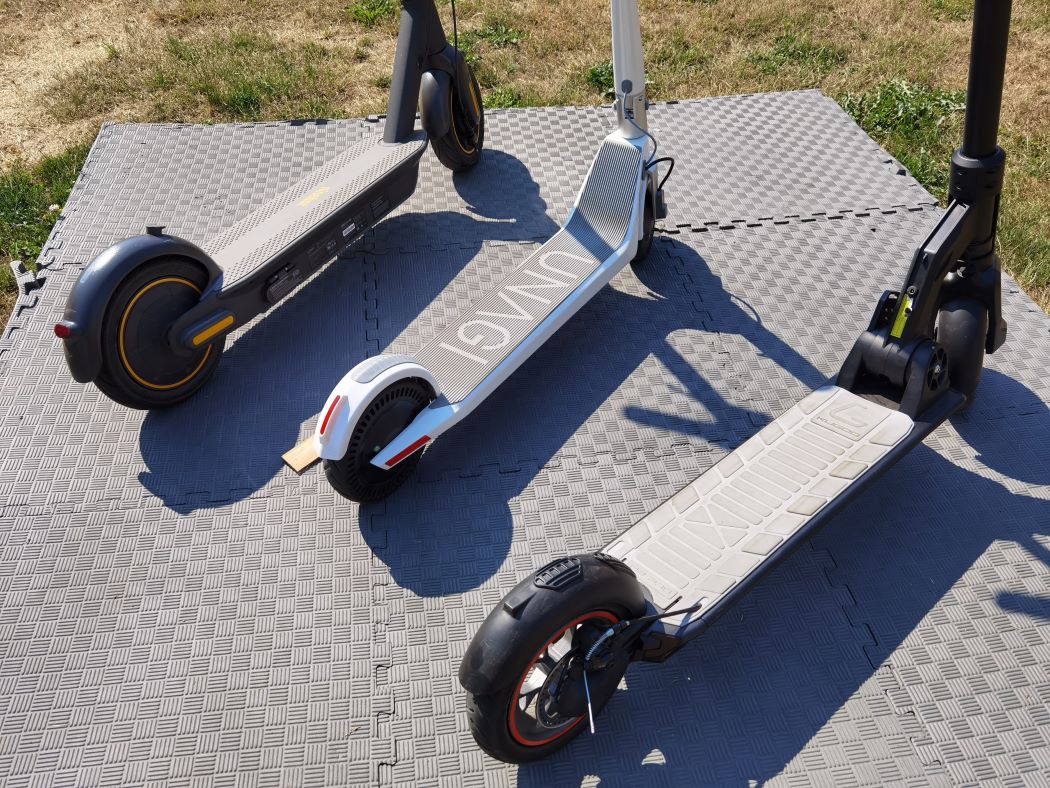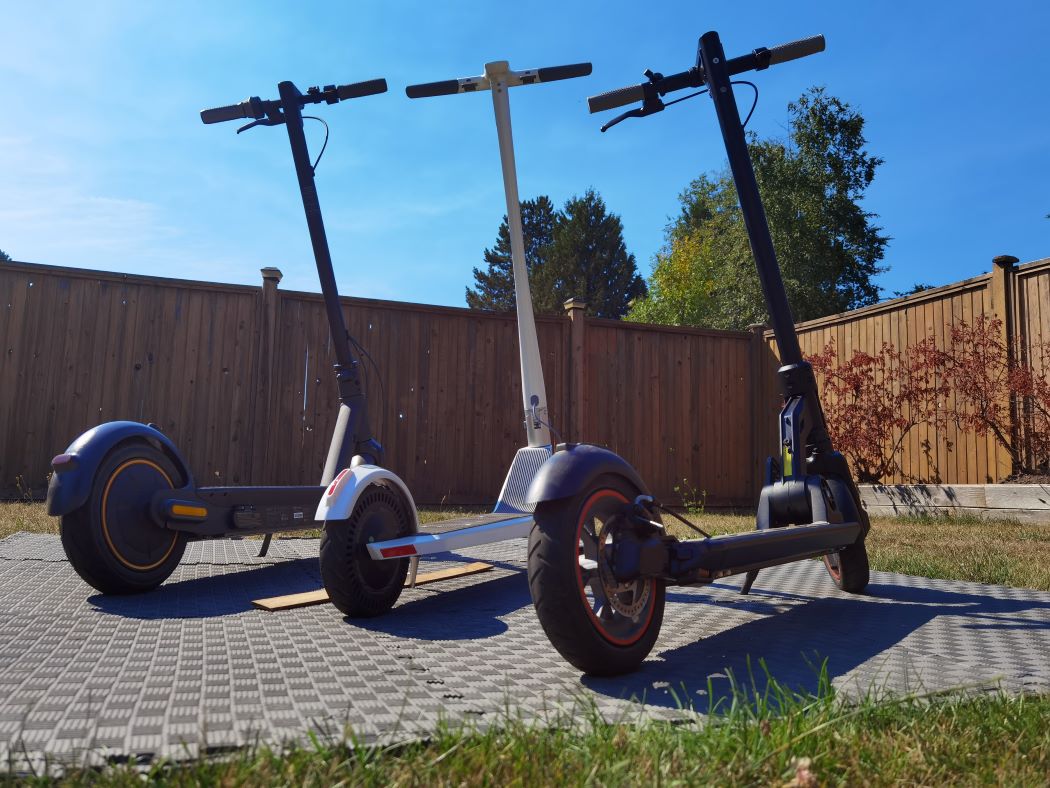
When it comes to transportation, the world is going electric. Improvements in lithium battery technology have introduced new bikes and scooters that are lighter, faster, and capable of travelling larger distances. Consumers today have a lot of brands to choose from. Understandably, it can be tough to know which one to get.
Hopefully, I can help. I’m comparing three e-scooters by Segway, Unagi, and Kugoo. As a reviewer, my three main criteria points for comparison are the build quality, speed/range, and rideability. A good e-scooter provides a fantastic transportation method, but it has to also be both safe and practical for day-to-day use.
The three e-scooters I’m comparing are the Segway Ninebot, the Unagi Model One E500, and the Kugoo M2 Pro. The Segway and Unagi are in the same price range. The Kugoo is the most affordable option. As such, I’ll examine it with respect to the value it offers when compared to the other e-scooters.
Build quality of Segway, Unagi, and Kugoo e-scooters
Most people have heard of Segway. They first reimagined personal transportation with the original Segway Human Transporter in 2001. Two decades later, they released the Ninebot e-scooter. It’s a beautifully crafted machine with a sturdy build, spacious standing room, and large air-filled tires.
In contrast, the Unagi Model One E500 is designed for practical ease of use. With a compact design, quick folding mechanism, and lightweight material, this e-scooter is easy to carry. The carbon fiber, aluminum, and magnesium frame provide an impressive strength to weight ratio. With puncture-proof rubber tires, it also requires zero maintenance.
The Kugoo M2 Pro frame is constructed with aviation-grade aluminum. This makes it light and durable. Unlike the other two e-scooters, the M2 Pro is designed for riding comfort. It has an excellent suspension system, making it capable of handling rough cracked sidewalks, gravel roads, and rougher terrain.

Speed & range of Segway, Unagi, and Kugoo e-scooters
Of course, everyone wants to know the max speed and range of an e-scooter. So let’s get it out of the way. The Segway Ninebot has a max speed of 30km/h and 65km range. The Unagi Model One E500 is slightly faster at 32km/h with a significantly shorter range at 25km. Remember, that’s 25km in optimal conditions.
The Kugoo M2 Pro has a max speed of 25km/h and a 30km range. When you compare its price to the other two e-scooters, it provides decent speed and distance. However, if you need to travel large distances, the Segway Ninebot outshines the competition. Nothing else comes close.
Portability of Segway, Unagi, and Kugoo e-scooters
One of the most deciding factors in choosing one e-scooter over another is portability. The overall weight, dimensions, and folding design play a huge factor. The Segway Ninebot weighs 41lbs, while the Unagi Model One E500 is considerably lighter at 24lbs. The Kugoo M2 Pro comes in between at 34lbs. If you’re looking for a light e-scooter, definitely consider the Unagi Model One E500.
Folded down, the Segway Ninebot is the longest of the three. I would recommend this to people who are willing to sacrifice weight and size for consistent speed and distance. If you need to travel long distances and can carry some weight, this e-scooter is for you.
The Unagi really shines in the portability department. The handle folds down at a 90-degree angle and sits parallel to the ground. At only 24lbs, it’s super easy to carry with one hand. The Kugoo M2 Pro also folds down nicely. The handlebars sit parallel to the ground, making it easy to carry with one hand. However, at 34 pounds, it’s 10lbs heavier than the Unagi.
If weight is a concern, choose the Unagi Model One E500. It’s impressively light and easy to carry. As much as I like the Segway Ninebot, the portability of the Model One makes it a compelling first choice.

Rideability of Segway, Unagi, and Kugoo e-scooters
I tested each scooter back to back on the same sidewalks, roads, and hills. I could really feel the difference—especially on the cracked sidewalk and up hills.
The Segway Ninebot Max is not only fast; it can also climb hills. I drove it on a smooth bike lane and hit a max speed of 30km. The ride was very comfortable, thanks to the large deck. I have a lot of hills by my house, and it only gave in on the steepest one. One thing I noticed was that you need to get to a high speed before going up the hill. Pedal to the metal!
The Unagi Model One could also climb hills with ease. When I consider its overall weight, this impressed me even more. I was getting good speed going up hills—much faster than I expected. That said, it was not a comfortable ride on cracked sidewalks. The ride gets rough, so you have to go slower and pay more attention.

Final thoughts on Segway, Unagi, and Kugoo e-scooters
There’s really no shortage of e-scooters on the market today. To the unobservant, they may all look the same. Spend some riding time with them, and you quickly notice the difference. The key to making the right decision is to go in knowing exactly how you plan to use it.
In my opinion, the Segway Ninebot is a commuter e-scooter. If you’re looking to replace your vehicle for daily trips to and from work, this is for you. While you can carry it, it’s not something you want to go upstairs with. You should already have a plan where you intend to store it at your destination. It’s not intended to be carried around too much. There and back, fast. That’s what the Segway Ninebot Max is for.
If you need to make short trips, have a smooth surface like a bike lane, and use other forms of transit (i.e., bus, subway, Skytrain), the Unagi Model One E500 is for you. While it can handle hills with relative ease, it does poorly on rough terrain. Still, it’s the lightest and easiest one to carry with a quick folding design. This e-scooter could make your daily commutes a whole lot easier. You might end up taking it everywhere!
Rougher terrain e-scooters require a different design altogether. That’s where the Kugoo M2 Pro excels. Despite being the most affordable of the three, it has the best suspension system. Going over cracked sidewalks was actually fun. The M2 Pro absorbs all the shock. It also makes the most noise. Those are trade-offs many will make to get an affordable e-scooter. If you plan on riding on gravel trails and rough terrain, the Kugoo M2 Pro is worth considering.
At this point, you’re probably wondering which one I would pick. As much as I love the Segway Ninebot Max, the portability of the Unagi Model One E500 is hard to resist. With a backpack, I could see myself using this to drop off packages to UPS or pick up some groceries like milk and fresh veggies. It could really add a lot of value for short commutes.
It’s only a matter of time before we see more e-scooters on the roads. People are starting to catch on—they’re a great way to travel short distances. If you’re in the market for an e-scooter, definitely check out all the different models available at Best Buy.



